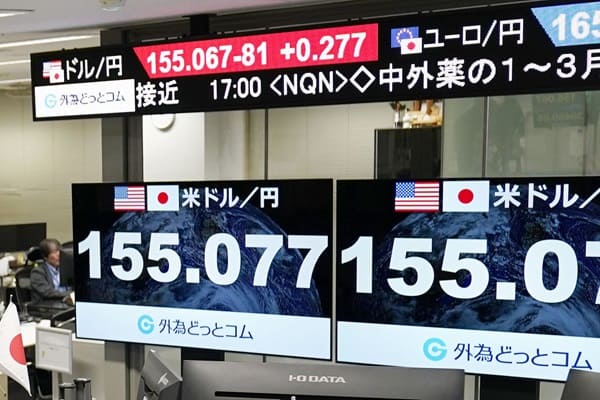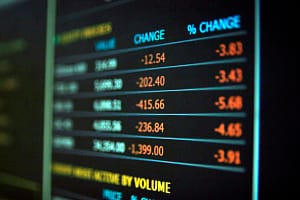At the close of the Tokyo Stock Exchange yesterday, the Nikkei 225 Index (JP225) rose by 0.72%, starting today’s Wednesday trading at 38,254.50.
This was supported by the weakening momentum of the yen’s rise, which helped boost export stocks and offset previous losses caused by declining tech stocks.
Meanwhile, the broader Topix Index increased by 0.7% to 2,680.8 points. The Nikkei Index returned to a decline in the last hours, and I believe this reflects the performance of the S&P 500 and Nasdaq, as investors worldwide await Nvidia’s quarterly report, scheduled to be released later today, Wednesday.
However, the number of advancing stocks exceeded those that declined on the Tokyo Stock Exchange, with 2,783 compared to 871, while 219 stocks remained unchanged.
Japanese stocks rose after yesterday’s close, with gains in the manufacturing sector leading the market higher, amidst the U.S. Dollar Index remaining steady at 100.74 with little change.
In my view, investor sentiment has turned positive with the halt in the yen’s upward momentum, leading to renewed buying in export-oriented stocks that were recently under pressure when the yen reached a three-week high of 143.45 yen against the dollar. Major companies such as Sony Group saw their shares rise by 2.8%, while Honda Motor and Toyota Motor shares increased by 1.8%. However, tech stocks continued to pressure the Nikkei, with significant losses in chip-related stocks.
Notably, Tokyo Electron saw a decline of about 1%, and Advantest, which counts Nvidia among its clients, dropped by 1.6%. The biggest loser was Lasertec Corporation, which fell by 4.3%.
But the gains in the Nikkei Index were supported by the strong performance of Fast Retailing, owner of the Uniqlo chain, whose shares rose by 0.6%, and Chugai Pharmaceutical, which climbed by 3.3% driven by concerns over a new epidemic outbreak. Among the 33 sectors on the Tokyo Stock Exchange, mining stocks rose by 2.2%, and the oil and coal sectors saw a 1.6% increase, fueled by rising oil prices amid concerns over potential supply disruptions.
In my opinion, Japan’s high-yield market has undergone a significant structural shift, moving away from the previous dominance of the real estate sector and towards improving credit quality among Asian issuers. These changes, in my view, open new opportunities for investors in bonds that offer higher interest rates because they have lower credit ratings than investment-grade bonds. This comes after the Bank of Japan recently raised interest rates.
These shifts in the Asian high-yield market are reflected in the J.P. Morgan Asia Non-Investment Grade Index, which achieved a return of 16.0% over the year ending in July 2024 and 12.1% year-to-date by the end of July.
The market recovery is not solely about Japanese yields, in my view. The recovery has been bolstered by an increase in new issuances. External dollar bond issuance in the high-yield market outside Japan in Asia reached $8.3 billion by the end of June 2024, surpassing the total for 2023 as a whole. It is expected that Asian bond issuance this year will significantly exceed last year’s total, with new debt issuances being heavily subscribed—a clear sign of strong demand for Asian credit securities.
Overall, the Asian high-yield market is poised for recovery, growth, and resilience, supported by structural macroeconomic drivers, diverse investment opportunities, and a potential improvement in market sentiment. However, I believe that Tokyo’s stock markets are somewhat affected by Ueda’s remarks during the parliamentary hearing when he emphasized the need to raise interest rates further.
Initial market reactions had little impact on the rise, as Ueda’s comments were accompanied by reassurances that further increases would not occur amid capital market instability. Nevertheless, the current modest strength of the yen continues to limit the capabilities of Japanese exporters and companies that focus mainly on exports. The USD/JPY pair dropped from 146.22 after Ueda’s appearance in parliament to 143.83 recently before modestly recovering to 144.39 this Wednesday morning.
However, I can say that the rise in the Nikkei 225 this year has been driven by a weak yen and export earnings. The yen carry trades have helped channel capital into Japanese equities. As the appeal of carry trades fades, so does foreign investment in stocks. Therefore, I believe investors should assess the Japanese economy’s ability to cope with interest rate hikes. High consumer costs could reduce domestic demand. Especially with falling interest rates in the United States, the yen is likely to continue rising, which will reduce exporters’ profits in the medium to long term.
Technical analysis of Nikkei 225 (JP225) prices
On the daily chart, the Nikkei 225 Index (JP225) dropped by -0.91% to reach 38,019. However, it modestly rebounded to trade at 38,212 today, Wednesday, with the price trading near its 100-day moving average at 38,175.55 but above its 200-day moving average below 37,156.50. Over the past seven trading days, the price has remained stable between these key moving average levels.
The price is still down by -2.86% this month, which is a negative technical signal, indicating that the index has not yet recovered from its recent sharp decline. The lowest point for the Nikkei 225 remains at 31,123.10, from which it has risen by approximately 22.25%. The index continues to attempt to reach the major resistance level at 39,260 in the medium term.

Nikkei 225 (JP225) – Prices Chart MT4 –-XS.com
The daily chart above for the JP225 Index shows a bearish market in a significant correction. The two daily candles at the most recent peak are small inverted hammers. While they are too small to be considered a reversal signal, they still indicate a potential change in direction.
On the other hand, the last candle has almost completed a 100% retracement to the level preceding the Bank of Japan meeting, and technically, a full retracement indicates strength in the upward movement. However, the market remains under the Ichimoku cloud, suggesting bearish sentiment in the near term.
Looking at the Relative Strength Index (RSI), we can also see that this recent rise was not driven by strong momentum. The RSI reached its highest point yesterday at 55, indicating relatively low momentum for such a long-term rise. Accordingly, the next support level in the medium term is at 37,599, with resistance at 38,864. If these support levels are broken and breached, the next level will be at 36,675, while the key resistance in case of a breakout will be between 39,447 and the Ichimoku cloud boundaries.
Support levels: 37,893.50 – 37,340.50 – 36,071.55
Resistance levels: 38,458.60 – 39,101.50 – 39,807.90






Leave a Comment